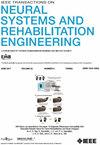Data-Driven Techniques for Estimating Energy Expenditure in Wheelchair Users
IF 4.8
2区 医学
Q2 ENGINEERING, BIOMEDICAL
IEEE Transactions on Neural Systems and Rehabilitation Engineering
Pub Date : 2025-01-30
DOI:10.1109/TNSRE.2025.3537333
引用次数: 0
Abstract
Providing feedback on energy expenditure (EE) may be an important tool to support obesity prevention among manual wheelchair users (MWU). This paper presents a data-driven approach for estimating EE based on data collected from 40 participants (20 MWU and 20 controls without disability) across different activities (lying, sitting and wheelchair propulsion at different intensities). We extracted features from heart rate, inertial measurement units (IMU), and individual personal characteristics to develop activity classification and EE estimation algorithms and investigate the influence of personal characteristics on EE estimates. Support Vector Machines were selected as classifiers, while Support Vector Regressors, Gaussian Processes, Random Forest, XGBoost, and Neural Networks were selected as regression models. High classification accuracy was achieved with minor confusion between activities and EE estimation results showed high generalisation capabilities of the trained models on unseen participants. We explored the impact of changing the position of the IMU on the accuracy of EE estimations. We recommend the wrist as the primary location for sensor placement. It provides a good trade-off between accuracy, high wear compliance rates and the possibility of integrating our algorithms in already existing wearable devices. Our findings showed that including data collected from people without disabilities to develop EE estimation algorithms for MWU did not enhance the estimation accuracy. In conclusion, data-driven algorithms based on wearable sensors and personal characteristics are effective for activity classification and EE estimation in MWU, but need to be personalized and further developed for daily life settings to be ecologically valid.求助全文
约1分钟内获得全文
求助全文
来源期刊
CiteScore
8.60
自引率
8.20%
发文量
479
审稿时长
6-12 weeks
期刊介绍:
Rehabilitative and neural aspects of biomedical engineering, including functional electrical stimulation, acoustic dynamics, human performance measurement and analysis, nerve stimulation, electromyography, motor control and stimulation; and hardware and software applications for rehabilitation engineering and assistive devices.

 求助内容:
求助内容: 应助结果提醒方式:
应助结果提醒方式:


